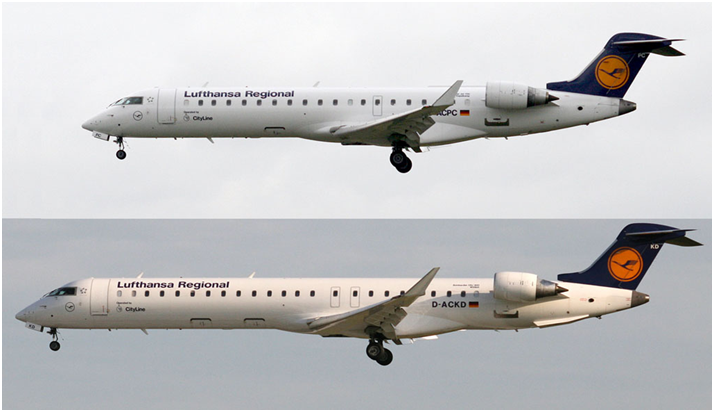![Bombardier's CRJ700 (top) and CRJ900 [Source: Wikimedia ]](https://fabbaloo.com/wp-content/uploads/2020/05/Flight1_img_5eb093f3504e5.png)
Charles Goulding and Liam Nixon of R&D Tax Savers discuss business and 3D printing implications of Mitsubishi Heavy Industries’ acquisition of the Canadair Regional Jet business.
The Purchase and Its Mutual Benefits
As announced on June 25, Mitsubishi Heavy Industries will purchase the CRJ (Canadair Regional Jet) business of Bombardier. Mitsubishi will pay a price of $550 million, along with taking on $200 million of Bombardier’s liabilities. Mitsubishi also will gain $180 million in bank financing credit. This transaction is expected to be completed in 2020.
This acquisition will set Mitsubishi and Bombardier in different directions. Mitsubishi will utilize this opportunity to enlarge their aircraft production. They are enamored with the supporting benefits that will accompany this purchase. Jon Hemmerdinger from FlightGlobal states: “Analysts agree: Mitsubishi does not envy the CRJ itself, but rather the global structure accompanying it, everything from engineering and certification expertise to customer relationships and support.” This purchase will allow Mitsubishi to benefit from both the CRJ aircraft themselves, and the additional global structure they will bring.
This agreement will cease Bombardier’s efforts in the commercial aircraft sector. Bombardier has gradually shifted their priorities in the aircraft space away from commercial and towards business. Their commercial aircraft production has been transferred to companies such as Airbus and an affiliate of Longview Aviation Capital. In addition to a focus on business aircraft production, Bombardier will hone in on rail transportation. This purchase is expected to be beneficial for both Mitsubishi and Bombardier.
CRJ Production Until the Purchase’s Completion
![Bombardier CRJ440 [Source: Flickr ]](https://fabbaloo.com/wp-content/uploads/2020/05/Flight2_img_5eb093f3b433f.png)
Bombardier will continue to produce the remaining queued CRJ jets for Mitsubishi. This process is expected to be completed in 2020. There are around 30 jets that Bombardier will produce on behalf of Mitsubishi before Mitsubishi takes over the entire process. Bombardier has planned on keeping their CRJ employees in Quebec either employed in another position with Bombardier, or migrated to Airbus.
3D Printing Developments
![Bombardier and Stratasys agreement [Source: Stratasys ]](https://fabbaloo.com/wp-content/uploads/2020/05/Flight3_img_5eb093f43176f.png)
Both Mitsubishi Heavy and Bombardier have made significant strides in 3D printing technology. Mitsubishi has recently started to market their 3D printer. This printer has the ability to produce metal, and also has monitoring and shielding capabilities. The first model of this metal 3D printer is known as “LAMDA 200,” and was completed in March.
Bombardier has also undergone a major 3D printing development in recent months. Bombardier has invested in the Stratasys F900 for 3D printing in their transportation sector. They plan on utilizing this Stratasys 3D printer for rail transportation, more specifically for train prototypes, tools, and rail parts. This investment may prove to be extremely useful as Bombardier shifts their focus away from commercial aircraft production and towards rail transportation.
The Research and Development Tax Credit
Enacted in 1981, the now permanent Federal Research and Development (R&D) Tax Credit allows a credit that typically ranges from 4%-7% of eligible spending for new and improved products and processes. Qualified research must meet the following four criteria:
-
Must be technological in nature
-
Must be a component of the taxpayer’s business
-
Must represent R&D in the experimental sense and generally includes all such costs related to the development or improvement of a product or process
-
Must eliminate uncertainty through a process of experimentation that considers one or more alternatives
Eligible costs include U.S. employee wages, cost of supplies consumed in the R&D process, cost of pre-production testing, U.S. contract research expenses, and certain costs associated with developing a patent.
On December 18, 2015, President Obama signed the PATH Act, making the R&D Tax Credit permanent. Since 2016, the R&D credit has been used to offset Alternative Minimum Tax (AMT) for companies with revenue below $50MM and, startup businesses can obtain up to $250,000 per year in payroll tax cash rebates.
Conclusion
Many expected Mitsubishi’s acquisition of Bombardier’s CRJ to happen, and the transaction has now officially been announced. This deal will prove to be beneficial for both companies. For Mitsubishi, they have certainly bolstered their commercial aircraft production. On the other hand, Bombardier now can focus its efforts in other areas, such as business aircraft and rail transportation production. Additionally, the effort that both companies are exerting towards 3D printing technology will only benefit them in the long run. Development and engineering in the fields of aircraft production and 3D printing may merit qualification for the now-permanent Federal Research and Development Tax Credit.











German RepRap, a maker of large-format 3D printers and silicone 3D printers, has been acquired by a surprising other party.